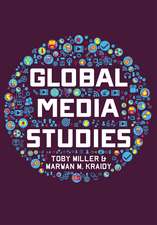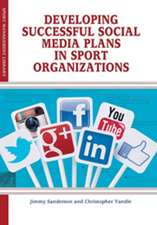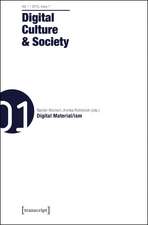Successful Science Communication: Telling It Like It Is
Editat de David J. Bennett, Richard C. Jennings Cuvânt înainte de Walter Bodmeren Limba Engleză Paperback – 28 sep 2011
| Toate formatele și edițiile | Preț | Express |
|---|---|---|
| Paperback (1) | 347.64 lei 6-8 săpt. | |
| Cambridge University Press – 28 sep 2011 | 347.64 lei 6-8 săpt. | |
| Hardback (1) | 708.77 lei 6-8 săpt. | |
| Cambridge University Press – 28 sep 2011 | 708.77 lei 6-8 săpt. |
Preț: 347.64 lei
Nou
Puncte Express: 521
Preț estimativ în valută:
66.52€ • 69.63$ • 55.37£
66.52€ • 69.63$ • 55.37£
Carte tipărită la comandă
Livrare economică 31 martie-14 aprilie
Preluare comenzi: 021 569.72.76
Specificații
ISBN-13: 9780521176781
ISBN-10: 0521176786
Pagini: 502
Ilustrații: 62 b/w illus.
Dimensiuni: 152 x 229 x 26 mm
Greutate: 0.68 kg
Editura: Cambridge University Press
Colecția Cambridge University Press
Locul publicării:Cambridge, United Kingdom
ISBN-10: 0521176786
Pagini: 502
Ilustrații: 62 b/w illus.
Dimensiuni: 152 x 229 x 26 mm
Greutate: 0.68 kg
Editura: Cambridge University Press
Colecția Cambridge University Press
Locul publicării:Cambridge, United Kingdom
Cuprins
Authors' biographies; Foreword Sir Walter Bodmer; Introduction: public engagement in an evolving science policy landscape Richard A. L. Jones; Part I. What it Helps to Know Beforehand: 1. Deficits and dialogues: science communication and the public understanding of science in the UK Simon J. Lock; 2. Explaining the world: communicating science through the ages James Hannam; 3. Science, truth, and ethics Richard Jennings; 4. The public's view of science George Gaskell, Sally Stares and Nicole Kronberger; 5. The common language of research Tracey Brown; 6. Not 100% sure? The 'public' understanding of risk John Adams; 7. The ethos of science vs. ethics of science communication Alfred Nordmann; Part II. Policy Makers, the Media and Public Interest Organisations: 8. Research and public communication in EU policy and practice Michel Claessens; 9. Tackling the Climate Communication Challenge Andrew C. Revkin; 10. Dealings with the media Stephen White; 11. Dealings with the US media Chris Mooney; 12. Relations with public interest organisations: consumers Sue Davies MBE; 13. Relations with public interest organisations: patients and families Alastair Kent; 14. Relations with environmental organisations: a very personal story Piet Schenkelaars; Part III. What You Can Do and How To Do It: 15. Building relations with the various groups David J. Bennett; 16. Finding the right words: how to shine in radio and television interviews Peter Evans; 17. Nanotechnology and the media - front page or no story? Richard Hayhurst; 18. The power of the podcast: the Naked Scientists' story Chris Smith; 19. The social web in science communication Hayley Birch; 20. Dealing with dilemmas and societal expectations: a company's response Lise Kingo and Susanne Stormer; 21. Science festivals Nicola Buckley and Sue Hordijenko; 22. Things to see and do: how scientific images work Rikke Schmidt Kjærgaard; 23. The triple helix: the undergraduate student-run face of science communication James Shepherd; 24. Public understanding of research: the Open Research Laboratory at the Deutsches Museum Paul Hix and Wolfgang M. Heckl; 25. 'Imagine': a communication project putting life sciences in the spotlight Patricia Osseweijer and Tanja Klop; Part IV. And Finally, Evaluating and Embedding Science Communication: 26. Evaluating success: how to find out what worked (and what didn't) Laura Grant; 27. Effectively embedding corporate science communication in academia: a second paradigm shift? Maarten C. A. van der Sanden and Patricia Osseweijer; Index.
Recenzii
'… a book that should be recommended reading for all those who are involved in any way with science. There is no better current comprehensive and succinct source that gives such an excellent background to the issues around science communication and explains how to engage with the public, with much valuable practical advice.' Sir Walter Bodmer, FRS
'Bennett and Jennings have assembled a diverse collection of straight-talking essays from a broad spectrum of communicators of science such as academic authors but also from the industry and media. Written in a practical, readable style and all well researched and well thought out, we are presented with history of scientific communication but also a handbook for those who could use a primer or those who are new to the communications game.' Edward Fenner, International Journal of Deliberative Mechanisms in Science
'Bennett and Jennings have assembled a diverse collection of straight-talking essays from a broad spectrum of communicators of science such as academic authors but also from the industry and media. Written in a practical, readable style and all well researched and well thought out, we are presented with history of scientific communication but also a handbook for those who could use a primer or those who are new to the communications game.' Edward Fenner, International Journal of Deliberative Mechanisms in Science
Descriere
A practical guide providing background, know-how and working examples of successful communication for practising scientists, courses and professionals at all levels.












